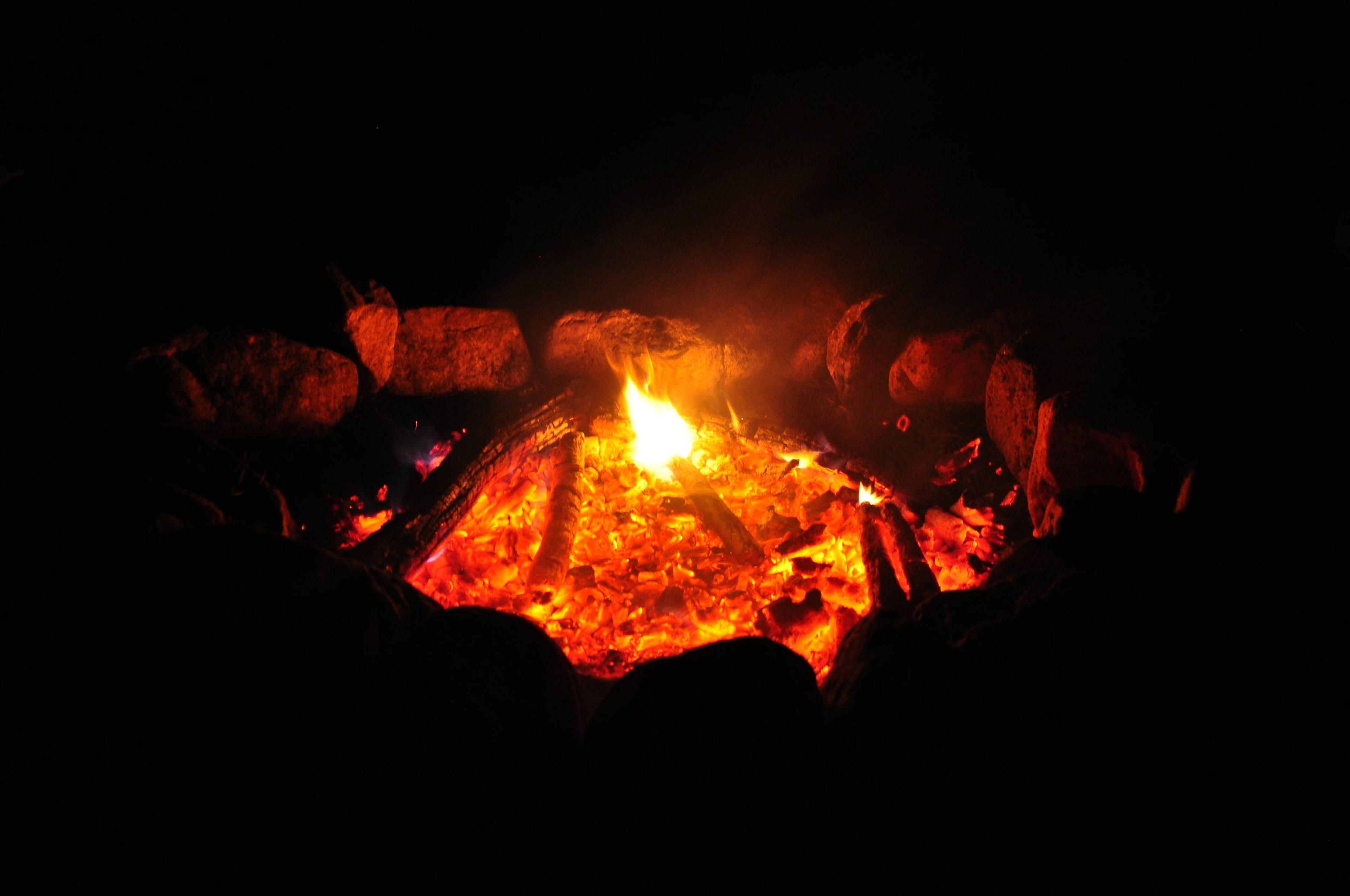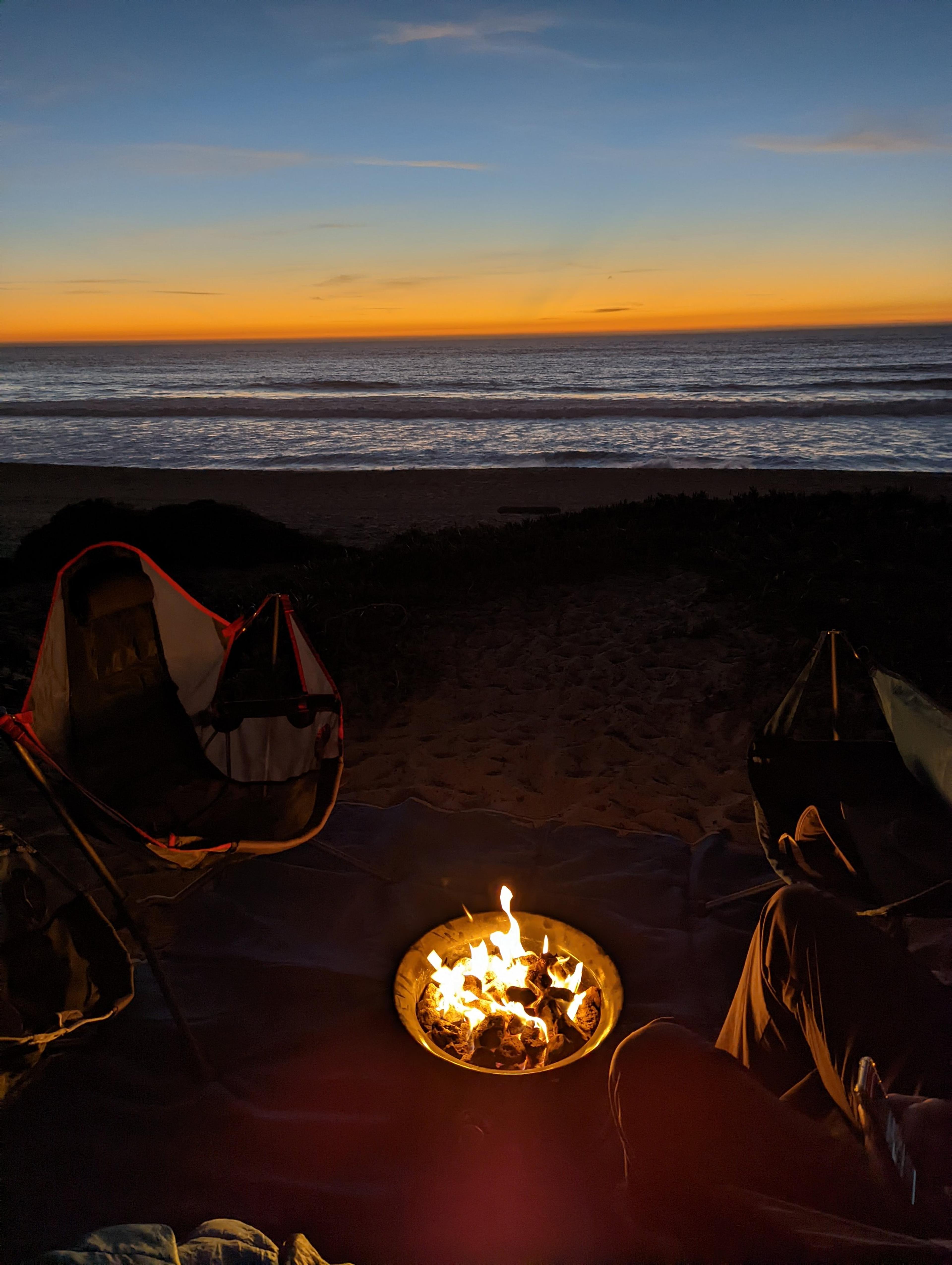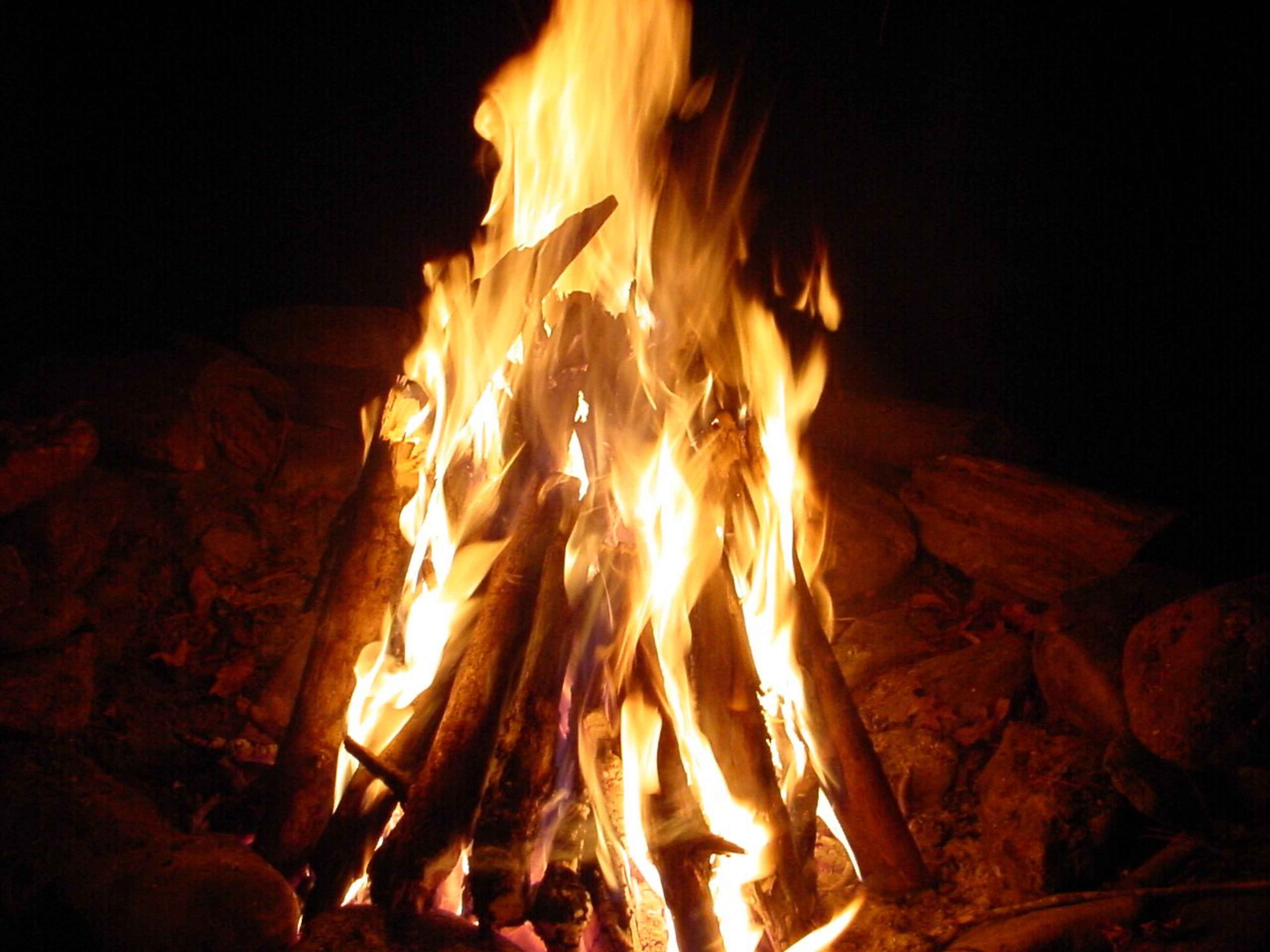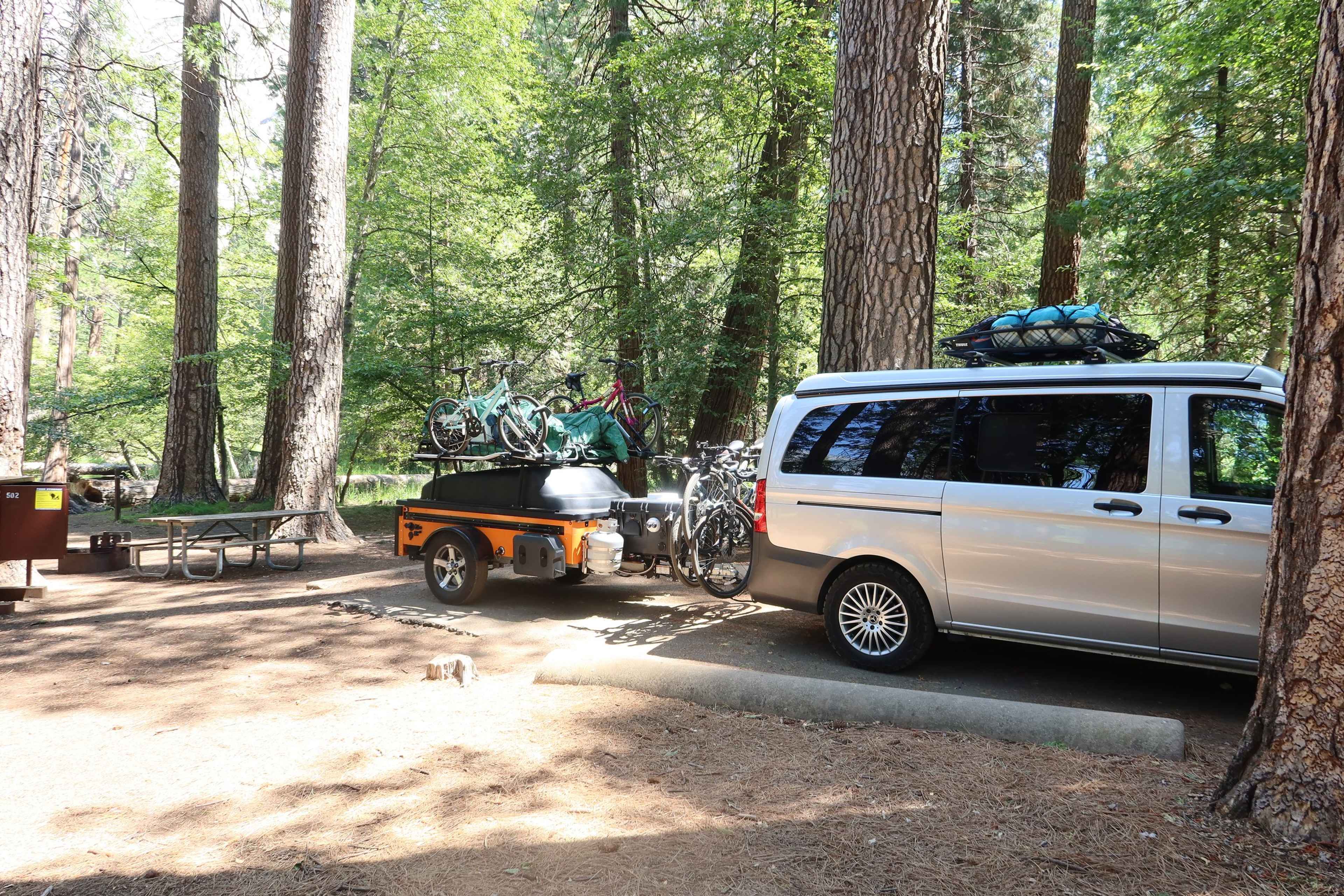How to Build a Campfire: reducing campfire smoke

Backpacking trip to Hogan Lake in Klamath National Forest.
Campfires are quintessential to the camping experience. It’s where stories are told, meals are shared, and warmth is sought. Yet, a common gripe among campers is the unpredictability of campfire smoke. The good news? With a bit of knowledge and planning, it's possible to build a campfire that minimizes smoke. Here's how:
Two quick reminders about building a campfire in campgrounds specifically:
➡️ Use Only Approved Wood:
Most campgrounds sell firewood that's appropriate for use in their designated fire pits. Always purchase and burn this wood, rather than bringing in outside wood, which can introduce invasive species. Gathering wood from the areas surrounding campgrounds is usually prohibited; check rules before you go or ask a ranger/camp host.
➡️ Use Only Designated Fire Pits
Always build your fire in the provided fire pits. These pits are strategically placed to reduce the risk of wildfires and are primarily designed for safety: to contain fires and prevent them from spreading to the surrounding area. Never attempt to create a new fire site or move the designated one.
Ways to Build a Less Smokey Fire
1. Air is Essential
Smoke is primarily unburned wood particles. So, to minimize smoke, you need to maximize combustion. This requires good airflow.
- Leave Spaces: When you're stacking your wood, leave gaps to let air in.
- Teepee vs. Log Cabin: While the teepee structure is good for starting fires, the log cabin structure allows for better airflow once the fire gets going. We like to then return to teepee style by leaning wood on the fire after it’s going strong (see picture below).

This is a throwback from a camping trip we took in November 2005 on the Chattooga River in Georgia (back when we were living in Atlanta) . We’ve been camping for a long time!
2. Build in Layers
- Tinder: Start with a layer of dry leaves, paper, or cotton balls.
- Kindling: Add small twigs and branches, progressively getting larger.
- Firewood: Place your hardwood logs on top, ensuring they're not too crowded.
3. Light it Right
- Light from Below: Always light your fire from the bottom. As heat rises, it will ignite the layers above progressively.
- Avoid Liquid Accelerants: They can cause sudden flames, unpredictable burns, and – you guessed it – more smoke. In many campgrounds, the use of liquid accelerants (like gasoline, kerosene, or lighter fluid) to start or boost fires is discouraged or outright prohibited.
4. Monitor and Adjust
Even the best-laid fires might produce some smoke, so keep an eye on it.
- Reposition Logs: If you see excessive smoke, try rearranging the logs to improve airflow.
- Add More Dry Wood: If the wood is damp, it can cause smoke. Ensure the wood you add is dry and seasoned.
5. Extinguish Properly
When you're done, pour water onto the embers until there's no more hissing sound. Stir the ashes to ensure all embers are out. Never leave a fire unattended, as this can be dangerous and lead to unintended smoky situations. Make sure your fire is fully extinguished before walking away.

🏕️ A smoke-free campfire not only enhances your outdoor experience but also keeps the environment around you clear and comfortable. We hope these tips will make your next camping adventure easier and even more memorable. Outdoorithm is here to simplify camping - check out our tools and gear recommendations to help you on your journey. And remember, if you ever have questions on the go, you can always ask our community forum.
Did you read this blog post and realize you’re not feeling up to building a fire? Or maybe you just want another option?
We love this Outland Portable Propane Fire Pit. It quickly hooks up to a propane tank, is super easy to use (simple knob turn on, like an oven), doesn’t smoke at all, and comes with a lid that significantly decreases fire hazard.
We also like this Fire Reflector - it really helps you maximize the warmth you receive from your fire, wood or gas.

We’d love to hear from you! We’re always making updates and developing new tools, and appreciate your feedbacks and comments. Happy camping!
Join our newsletter to get more resources and tips to help your family camp with confidence!

